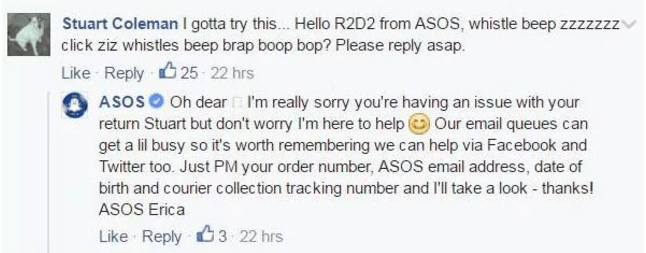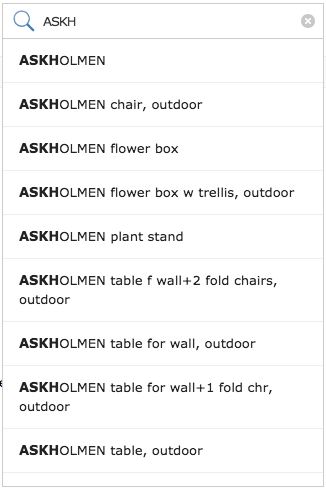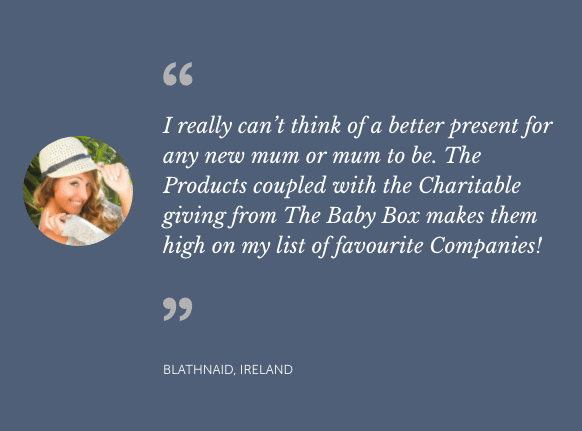10 things you should be doing to increase sales on your eCommerce site
So you’ve got an online shop, it’s tipping along nicely. Great stuff. Let’s make it better… and by better, I mean let’s get it making more money.
The tips below apply to all eCommerce sites, if you’ve already got them all up and running well then congratulations, the pints are on you!
1. Think about your categories
Perhaps the simplest but most often overlooked ‘must-do’ is how you categorise your products on site for users. The more products you are selling, the more important this becomes. As a shop manager you will be intimately familiar with the product range, but the way you categorise products may not be as evident to your new potential customers.
User testing is the best way to pin point any issues. You can also analyse your analytics reports to see how users navigate the site, and address areas that could be improved. Is there a drop off when users hit certain categories? Perhaps they didn’t find what they expected to see there.
Analyse user journeys to see if users are taking the most logical route through the site, if not, then perhaps your website’s UX needs to be looked at. Don’t be afraid to place products in more than one category if it makes sense.
Keep your categories relatively broad, and then use filtering options to allow users to pin point the products they are looking for.
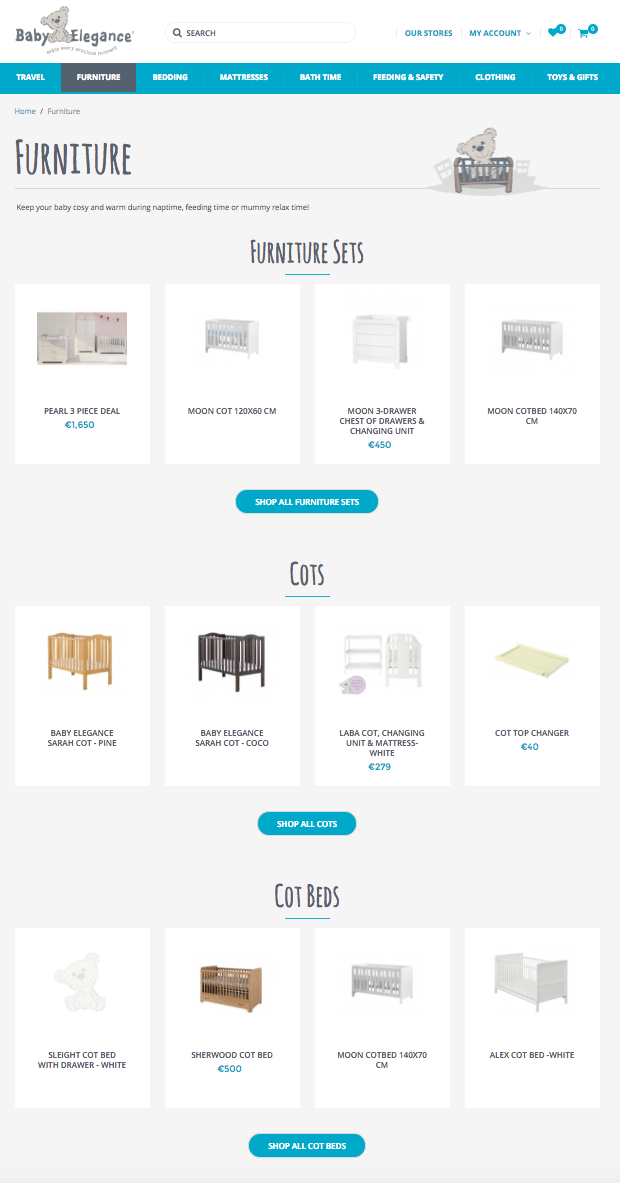
2. Online Chat
If you have the capability to manage an online chat facility then this can be a great way to gain users trust, answer any questions they have about your products, and increase your conversion rate.
Online chat can also act as a long term form of user testing. Keeping records and analysing chat queries can highlight questions that keep arising (pain points), and point you towards areas of your site that might need attention and clarification. The main point to note here is that studies show that having a live chat facility on your website will directly influence sales, if managed properly.
3. Instant search / predictive search
Make sure users who come to your site knowing exactly what they want can find it easily and as quickly as possible. Instant and predictive search will guide the user straight to the product their looking for.
4. Display Related / Bestsellers / Featured Products
Your eCommerce homepage should show at least Featured products if not all of the above. You need to hook users from the get go, so showing a selection of the most in demand products, or seasonal items will encourage clickthroughs.
The product that a user navigates to should never be a “dead end”. Always show related items / suggested items. This can create up-sells on what may have been a single sale otherwise. I can tell you that it’s worked on me more than once. (OK, a LOT more than once).
The bottom line? Product recommendations are responsible for 10–30% or eCommerce site revenue. Not one to be ignored.
5. Customer Accounts and Wishlists for easy re-purchasing
While every eCommerce site should allow guest checkouts (22% of users will abandon a cart if they’re forced to sign up — source), you should also allow users to save their details for easy repurchasing. This benefits the customer in that they might be mores inclined to repeat purchase if they don’t have to complete all of their details again, and allows you to contact them via email (assuming they agreed to follow up contact).
It also allows them the ability to save a wishlist of products that they are interested in but not ready to purchase right now. If they register and save their Wishlist, you can send them an email when an item on their wishlist is on sale for example, incentivising them back to your store. Wishlists can also be created by guest users, and can be stored using cookies for up to 30 days, so that their Wishlist items are visible when they return to the site within that time. Make sure your design allows for the Wishlist items to be displayed prominently to the user, and fallback gracefully if no Wishlist items have been saved.
You now have some audience information that you can use going forward to target the customer with direct advertising, or tailored mails. Be clever with the information collected from your user (without being obtrusive or asking for too much of their time) and you can develop a wealth of knowledge on your consumer base that can be used in future marketing strategies.
6. Create scarcity to create demand.
Showing stock quantities, or low stock indicators can drive sales.
I know from experience. I recently was trying to book a room in Clonakilty for a friends wedding and panic booked a B&B a few km outside the town due to the indication that no rooms were available in the main hotels in the town at the time. Lo and behold I input the same search terms today and see that rooms are available.
While I’m currently kicking myself that I didn’t contact the hotels directly, or do more research, it shows that time-poor consumers can be persuaded to purchase based on the indication that they won’t have the chance again.
7. Shipping
One of the biggest reasons for abandoned carts? Shipping Costs. Specifically, customers are shocked by the price increase when they get to the checkout and see shipping costs added to the basket subtotal. With regard the customers abandoning their carts before checkout have been reported to be as high as 56%. So offering free shipping will increase conversions straight off the bat, but statistics show that it can also dramatically increase sales.
The solution? Offer free shipping options when possible. According to a Wharton study conducted in 2014, shoppers tend to spend nearly 30% more if free shipping is included. The feasibility of offering free shipping will vary on a case by case basis, but the potential sales increase should be noted.
You should consider some or all of the below if you aren’t ready to offer outright free shipping just yet:
- Free shipping over a certain amount
- Offer free shipping on products with higher margins
- Offer free shipping across the board, with an optional “Express Shipping” option at a higher margin. Customers who cannot wait can make up the difference in shopping costs.
- Make shipping free for account holders. This encourages sign ups, which allows you to target your customers effectively and increase long-terms customer loyalty and repeat business.
8. Emails — talk to your audience
Assuming you have permission to contact your customers, (by integrating an explicit permission field in the checkout form, or an implied consent through T’s and C’s), you can use your knowledge of the market to target them directly. The success of your email marketing will depend on how well you know your audience, their likes and dislikes and shopping habits. You’ll also need to get the tone of voice right.
Make sure to get your brand personality across in a personal way. Don’t just mail out a list of products that you want to sell, you need to speak to your customer and highlight items that they might want to buy based on previous buying habits, age range, gender etc. Segment your email database as best you can so that your messaging can be as relevant and engaging as possible.
This is something that iClothing do very well. For example the email I received last week below, (on International Women’s Day).
This is a good example of keeping your customer interactions personal and relevant. The Primary message calls out International Women’s day, the supporting message offers you 20% off all orders for that day only.
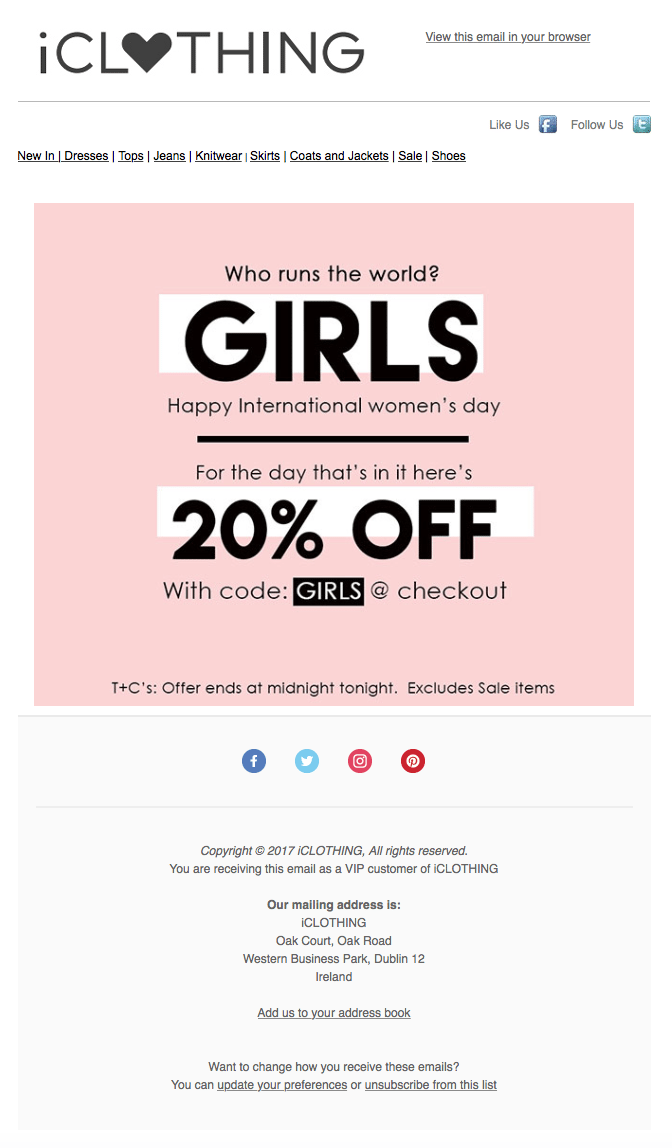
You should also use emails to specifically target customers who Abandoned their carts, sending a friendly reminder that the items are still in stock, or offering a discount on one or all of the products to convert the sale. As mentioned earlier, Wishlist reminder mails can also increase conversions.
You can refine and improve your email marketing strategy by conducting A/B testing, adjusting your send times to see if you get better open rates in the morning vs the afternoon, etc.
9. Leverage customer reviews
Enabling product reviews can generate content for you to use in marketing campaigns or on site. Reviews from previous customers will create a sense of trust and a personal touch that users will appreciate. We’ve displayed customer reviews prominently on the homepage of The Baby Box.
10. Get social!
The majority of social media eCommerce conversions come from Facebook. If you want to drive sales through social media, this is where you should be concentrating. Coming up behind Facebook are the other visual channels, Instagram, Pinterest, and Polyvore.
Your Social Media strategy should be well considered. Share quality images of your product, and make sure your brand is recognisable. Again, you’ll need to think about your target audience here and what they’ll want to see, not just memes that you find funny…
Your brand should have a real personality, make one up if you need to! Give him / her a name, personality traits, even a picture, whatever helps you understand the personality that you should consistency be portraying across social media.
This means that even if you have a team of people managing your social media channels, they all do so with a clear and consistent tone of voice.
Make sure you have the time and people power to manage your social media presence properly. Too often it becomes an afterthought to “real work”. Interacting with your customers online can drive sales, increase customer loyalty, and add a “human” face to your brand. Keep it friendly and helpful and you can’t go too far wrong.
Don’t put a chat bot in charge. ASOS were embarrassed back in May last year when they were accused of having automated bots running their Facebook page…
